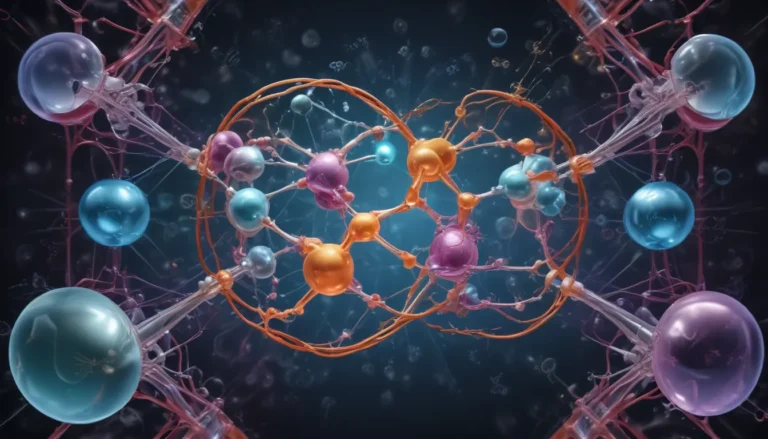A Note About Images: The images used in our articles are for illustration purposes only and may not exactly match the content. They are meant to engage readers, but the text should be relied upon for accurate information.
Chemistry is a world filled with intricate concepts and fascinating phenomena, and at the heart of it all lies the enigmatic realm of elementary steps. These fundamental building blocks of chemical reactions hold the key to unraveling the mysteries of nature and driving technological innovations. In this article, we will embark on a journey through 9 captivating facts about elementary steps, exploring their significance in the intricate dance of molecules that governs the world of chemistry.
Understanding the Foundational Building Block
At the core of complex chemical reactions lies the elementary step, a single reactant transforming into a product through a sequence of defined steps. These steps represent the smallest changes in molecular structure, offering crucial insights into the intricacies of chemical transformations that shape the world around us.
A Mesmerizing Dance of Molecules
Visualize the elementary step as a mesmerizing dance of molecules, where reactants collide to form new chemical bonds. This intricate choreography dictates the speed and outcome of a chemical reaction, capturing the attention and curiosity of chemists worldwide.
The Crucial Role of Activation Energy
Activation energy serves as the threshold that must be overcome for an elementary step to take place. This energy barrier determines the speed at which a reaction occurs, offering scientists a means to manipulate and control reactions for diverse applications across various fields.
Unveiling Reaction Mechanisms with Elementary Steps
Elementary steps play a pivotal role in constructing reaction mechanisms, providing a detailed sequence of events during a chemical reaction. By studying these steps, scientists gain valuable insights into the complex pathways and intermediates involved, expanding our understanding of chemical processes.
Catalysts: A Catalyst for Innovation
Catalysts accelerate chemical reactions by providing an alternative pathway with lower activation energy. Understanding elementary steps is crucial in designing catalysts that enhance reaction rates and efficiency, driving advancements in industries such as pharmaceuticals, materials science, and environmental sustainability.
Delving into Elementary Step Kinetics
Elementary step kinetics focuses on understanding the rates at which individual elementary steps occur. By studying kinetics, scientists can unravel the factors influencing reaction rates, optimize reaction conditions, and develop efficient chemical processes that propel scientific discoveries and technological advancements.
Quantum Mechanical Insights into Elementary Steps
Elementary steps offer quantum mechanical insights into the behavior of atoms and molecules during chemical reactions. Theoretical calculations and computational models bridge the gap between experimental observations and atomic-level interactions, aiding in the design of innovative chemical compounds.
The Art of Organic Synthesis and Elementary Steps
Organic synthesis, the science of creating complex organic compounds, heavily relies on understanding elementary steps. By strategically designing reactions, chemists can construct intricate molecular structures with precision, driving advancements in drug discovery, materials science, and technological developments.
Deciphering the Mysteries of Nature with Elementary Steps
Elementary steps allow us to unravel the intricate mechanisms behind natural phenomena, from photosynthesis in plants to the metabolism of living organisms. These steps serve as the foundation for understanding the fundamental building blocks of life itself, offering a glimpse into the secrets of nature.
In conclusion, elementary steps are not merely a concept in chemistry; they are the key to unlocking the mysteries of chemical reactions and shaping our understanding of the world. By delving into the enigmatic facts about elementary steps, we gain a deeper appreciation for their crucial role in scientific advancements and technological innovations that drive progress and shape the future.
FAQs: Unraveling the Mysteries of Elementary Steps
-
What is an elementary step in chemistry?
An elementary step is a chemical reaction that occurs in a single step with a specific rate equation without any intermediate stages, representing the fundamental event in a reaction mechanism. -
How do elementary steps contribute to reaction rates?
Elementary steps help determine the slowest step in a reaction mechanism, providing insights into the overall reaction rate and the factors influencing it. -
What are intermediates in elementary steps?
Intermediates are temporary species formed during an elementary step, neither reactants nor products, that play a role in the reaction mechanism. -
Can elementary steps occur independently?
While elementary steps can occur independently, they are often part of a complex reaction mechanism involving multiple steps. -
How are elementary steps represented in chemical equations?
Elementary steps are typically represented by individual chemical equations describing the reactants, products, and stoichiometry involved in the specific step.
Embark on your journey into the mesmerizing world of chemical reactions and explore the intricate mysteries of elementary steps. Whether you’re a curious learner or a seasoned chemist, there’s always more to uncover in the captivating realm of chemistry. Trust in our commitment to quality and authenticity as you delve into the wonders of elementary steps and unveil the secrets of the chemical world.






